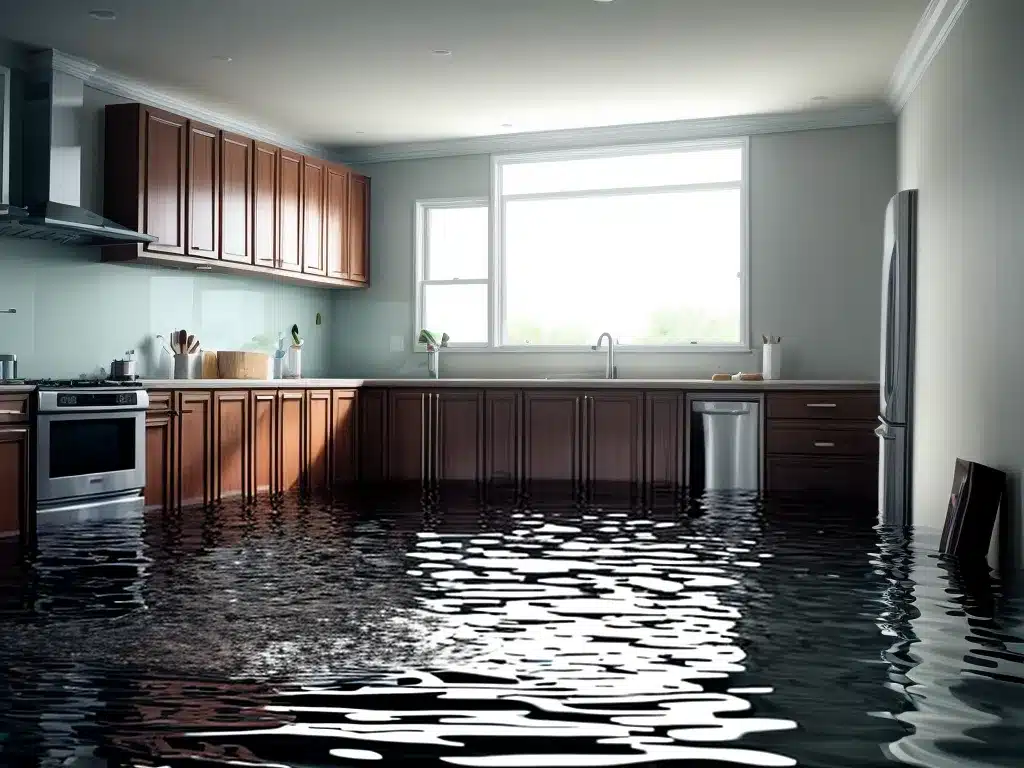The flood waters have receded. Your home is a mess. Furniture is overturned, drywall is saturated, and floors squish when you walk. It may feel overwhelming, but you can get your house back to normal with proper water damage cleanup. Here is what you need to know.
Assess the Damage
The first step is to fully assess the damage. This will help you understand what needs to be done.
-
Walk through the entire home. Check every room, closet, and crawl space. Look for standing water, soaked materials, mud, and moisture.
-
Examine floors, walls, and ceilings. Floors may need to be removed. Drywall and insulation will likely need replacing anywhere that got wet. Mold can start growing within 48 hours.
-
Check appliances and electronics. Anything that got wet needs to be thoroughly dried out and inspected before using again. Water can short circuit appliances.
-
Look for hidden moisture. Use a moisture meter to check walls and floors for trapped water you can’t see. Wet spots will need extra drying.
Safety First
Flood cleanup involves health hazards. Make safety your top priority.
-
Wear protective gear like goggles, masks, gloves, and rubber boots. Floodwater contains contaminants.
-
Turn off electricity at the breaker if any outlets or wires got wet. Don’t turn it back on until electrical system has been inspected.
-
Watch for sharp debris like broken glass and nails. Dispose of hazardous debris carefully.
-
Be aware of risks like electrocution, chemicals, mold, and falls on wet surfaces. Work carefully.
Document the Damage
Thoroughly documenting damage helps with insurance claims and repairs.
-
Take photos and videos of every affected area before touching anything. This provides proof of damage.
-
Make detailed notes describing damage and listing affected items. Include serial numbers of appliances.
-
Compile receipts for damaged and lost items. Get professional estimates for repairs.
-
Contact your insurance company right away. File a detailed claim with all documentation.
Remove Excess Water
Eliminating standing water prevents further damage and limits mold growth.
-
Use a wet/dry shop vacuum to suck up small pools of water. Empty it frequently.
-
Soak up larger amounts of water with towels. Wring them out in buckets.
-
Set up water removal pumps if needed for large amounts of standing water. Direct water outside.
-
Remove wet items and debris. Discard ruined porous materials like carpet, padding, and insulation.
Dry Out the Property
Getting things dried quickly is key to restoring your home and preventing mold growth.
-
Open doors and windows to let air circulate and lower humidity. Use fans to increase airflow.
-
Remove wet drywall at least 12 inches past damaged area to expose wall cavities. Let air circulate inside walls.
-
Run dehumidifiers to extract moisture from the air. Keep humidity below 50%.
-
Use desiccant dehumidifiers or a drying machine for fast, thorough drying in extreme cases.
-
Dry wood, concrete, and masonry slowly to prevent cracking and warping.
Clean and Sanitize
Floodwaters are contaminated. Thorough cleaning kills mold and bacteria.
-
Wash all hard surfaces with antibacterial cleaner. Scrub off dirt and residues. Disinfect anything floodwater touched.
-
Clean wood studs, sills, and beams exposed after removing drywall. Let them dry completely before rebuilding.
-
Shampoo carpets and upholstery, unless too badly damaged. Discard if they stay damp despite cleaning.
-
Vacuum out HVAC system and ductwork. Change filters. Sanitize vents.
-
Clean anything you want to keep with a disinfectant designed for flood cleanup.
Make Repairs and Rebuild
Finally, you’re ready to start putting your home back together.
-
Inspect electrical system and appliances before turning power back on. Replace components damaged by water.
-
Hang new drywall once framing is completely dry. Mud and tape seams. Add insulation.
-
Install new flooring if needed, after subfloor has fully dried.
-
Replace damaged cabinets, trim, and fixtures. Salvage anything unaffected you can clean and reuse.
-
Paint walls and ceilings with mold-inhibiting primer and paint designed for kitchens/bathrooms.
The flood was a nightmare, but you can make your home new again with methodical, careful water damage cleanup. Stay patient and be thorough at each step, and you’ll get through this.







